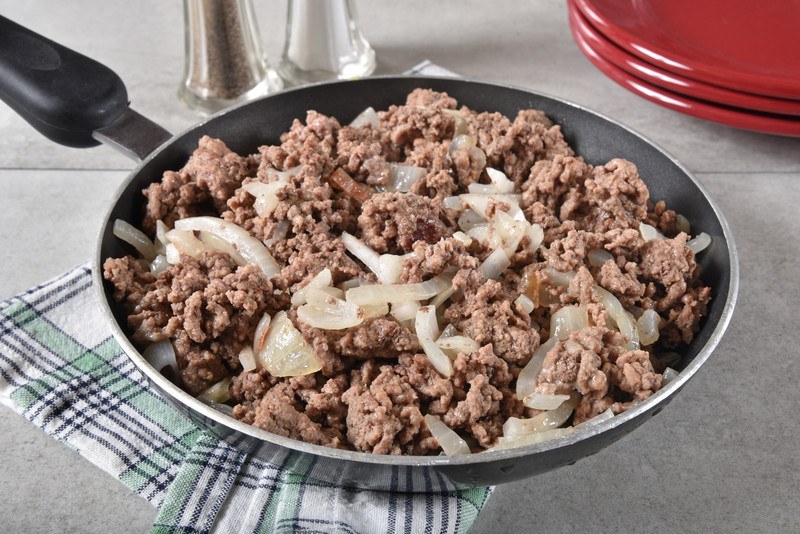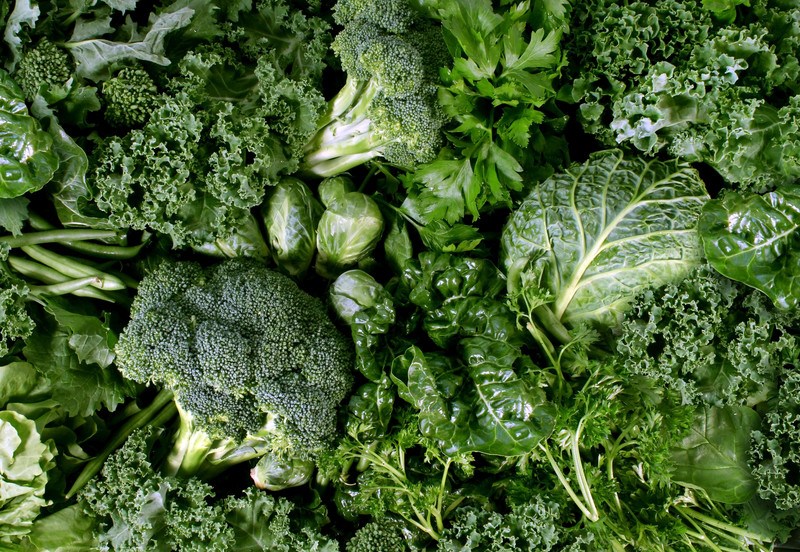
Migraines are headaches that are so painful that sometimes people who get them can’t work through them. People with migraines could also experience vision symptoms and nausea. Supplementing with high doses of some vitamins and minerals could help prevent migraines, so it stands to reason that a migraine diet containing these types of compounds could help keep migraines at bay, too.
If you’re interested, read through this list of the 12 best foods for migraines. At the end of this article, I’ll share three food combinations that could act as a springboard for you as you begin to eat in ways that help you prevent migraines.
12 Foods For Migraines
Lean Beef

Lean beef can help prevent migraines partly because of its rich content of riboflavin. High doses of riboflavin treatment have been shown to reduce the frequency of migraine headaches. Taking supplements of 400 mg of riboflavin over three months, in conjunction with magnesium and CoQ10, could help prevent migraines.
A 4-ounce serving of 97% lean ground beef provides around 13% of the recommended daily value for riboflavin or around 0.171 mg. It’s not enough for a high-dose treatment of riboflavin, but it can help increase the content. This serving size of lean ground beef also provides 6% of the daily recommendation for magnesium, along with several B vitamins and other nutrients.
Dark Leafy Greens

Dark leafy green vegetables such as spinach and kale are rich in several vitamins and minerals. One of the minerals they’re high in is magnesium, which could help prevent migraines. Magnesium is sometimes used as a high-dose supplement in conjunction with riboflavin. While food sources don’t contain those high-dose amounts (around 500 mg), they can help increase the magnesium content in your body.
One cup of raw spinach contains 6% of the daily recommendation for magnesium or around 23.7 mg. A cup of raw kale provides 2% of the daily recommendation. Both dark leafy green veggies also provide decent amounts of folate, which could also reduce migraine symptoms.
Lentils

Lentils are lens-shaped legumes. They’re packed with nutrients, including protein and fiber.
Where migraines are concerned, lentils are a good source of several nutrients that could help alleviate migraine symptoms or help prevent migraines from occurring. One cup of raw lentils contains 230% of the daily recommended intake for folate, as well as 80% of the daily recommendation for vitamin B6, which has been associated with reduced migraine symptoms.
This serving size also supplies consumers with 31% of the daily recommended intake for riboflavin and 23% for magnesium. Lentils are also a great source of other health-supporting nutrients, including 116% of the daily recommendation for manganese. This could be interesting because women who have migraines also tend to have thyroid imbalances, and manganese is involved in the production of thyroid hormones. The research connecting manganese to migraines is scant, but it might be a mineral worth watching.
Salmon

Salmon is a superfood that’s packed with omega-3 fatty acids. These healthy fats have several heart-related health benefits, but they’re also associated with less frequent migraines and less pain with migraines. One three-ounce serving of wild Atlantic salmon contains 1.22 mg of omega-3 fatty acids.
One small salmon fillet also contains 16% of the daily recommended intake for riboflavin, 80% for vitamin B6, and 13% for magnesium.
Salmon provides two other nutrients that could help fight migraines. Like vitamin B6, vitamin B12 could help reduce the risk of getting a migraine. Some sources indicate that people who supplement with vitamin B12, or cobalamin, could reduce their risk of getting a migraine by 80%.
Salmon is also rich in vitamin D. Low blood serum levels of vitamin D are associated with migraines, and some sources have proposed the idea that increasing vitamin D in the blood could help prevent migraines.
One small salmon fillet provides 315% of the daily recommendation for vitamin B12 and 116% for vitamin D.
Eggs

Eggs are a low-carb, high-fat food that could be part of a healthy ketogenic diet. Some research has linked ketogenic diets to fewer migraines.
Besides the ketogenic contribution, eggs are a nice source of several nutrients that could help alleviate migraine symptoms or prevent migraine attacks.
One egg provides 5% of the daily recommended value for vitamin D, 18% for riboflavin, 19% for vitamin B12, 7% for vitamin B6, and 2% for magnesium.
One interesting thing about eggs is that they’re also relatively high in selenium. One egg contains around 28% of the daily recommendation for selenium. Along with riboflavin, selenium plays a role in modulating oxidative stress in the mitochondria of the brain, which could help prevent migraine attacks.
Mushrooms

Some people have used psychoactive mushrooms to help alleviate cluster headaches and migraines. However, even the grocery store variety is packed with nutrients that could help prevent migraines and reduce the symptoms.
One cup of diced portabella mushrooms contains 9% of the daily recommended intake for riboflavin, 6% for folate, 20% for pantothenic acid, 10% for vitamin B6, 2% for vitamin B12, and 29% for selenium. Pantothenic acid is interesting because supplementing with it, in conjunction with other nutrients like folate, could help improve migraine symptoms.
Some studies also show that the B vitamin niacin could help prevent migraine headaches. One cup of chopped portabella mushrooms contains 24% of the daily recommended value for niacin.
Tuna

Like salmon, tuna contains several vitamins and minerals that could help fight migraines. A serving of half a tuna fillet contains 75% of the daily recommended value of vitamin B6, along with 56% of the daily recommendation for cobalamin.
A 3-ounce serving of tuna also contains 24% of the daily recommendation for vitamin D, 11% for magnesium, 56% for selenium, and 5% for zinc. Tuna is also a great source for the B vitamins thiamin, niacin, riboflavin, and pantothenic acid.
One great thing about tuna is that it can be mixed into sandwiches, salads, and casseroles and packed as easy, nutritious lunches.
Chia Seeds

Chia seeds are tiny, black seeds that are native to northern Mexico. These superfood seeds are rich in magnesium, omega-3 fatty acids, and other nutrients that could help keep migraines at bay.
A one-ounce serving of chia seeds contains 6% of the daily recommended intake for folate, 10% for vitamin B6, 28% for magnesium, 13% for selenium, and 11% for zinc. They’re also a great source of niacin and riboflavin.
As an interesting side note, chia seeds are also rich in fiber. One ounce of chia seeds contains 28% of the daily recommended intake for fiber. Some sources indicate that the high fiber content of chia seeds could support the growth of beneficial bacteria in the gut and help heal leaky gut syndrome. This is important because a leaky gut could contribute to migraines.
Avocado

Like chia seeds, avocados are superfoods that are rich in a variety of different compounds that could help prevent migraines or alleviate the symptoms. This includes high levels of fiber and omega-3 fatty acids, which contribute to gut health. Avocados are also naturally ketogenic foods that are low-carb but high in fats that ketones are produced from.
One avocado provides 30% of the recommended daily intake for folate. Avocados are also rich in niacin and riboflavin. Avocado also contains around 30% of the daily recommendation for vitamin B6, 26% for vitamin K, 11% for magnesium, and 9% for zinc.
Nuts

Most nuts are high in fats and fiber and low in carbohydrates, so they fit well with a migraine-fighting, ketogenic lifestyle.
Almonds are some of the most nutritious nuts to try. One ounce of almonds contains 25% of the daily recommended value, along with 19% for magnesium. Almonds are also a great source of other vitamins and minerals, including zinc, selenium, vitamin B6, niacin, thiamin, and folate.
Other nuts that are rich in nutrients that could help alleviate migraines are cashews and Brazil nuts. Brazil nuts are particularly high in selenium. Nut butter like almond butter and cashew butter could help provide the nutrients that fight migraines, too.
One caution about nuts, though: some people are sensitive to nuts and find that nuts could actually trigger migraines. If you’re questioning whether they’re good for you, try them in small amounts and journal about how you feel after you eat them.
Bananas

Bananas contain both soluble and insoluble fiber that contributes to a healthy gut microbiome. They’re also rich in magnesium, which could help prevent migraines. One banana contains 15% of the daily recommended value for magnesium.
A banana also provides 64% of the daily recommended intake for vitamin B6. Bananas can provide energy for people who get migraines because of low blood sugar, and they’re rich in B vitamins, vitamin C, selenium, and zinc.
One great thing about bananas is they’re a grab-and-go kind of food. They’re easy to pack into lunches for a quick burst of nutrients that could help keep migraines at bay.
Black Beans

Like lentils, black beans are protein-packed legumes that are high in fiber that could support a healthy microbiome. One cup of black beans contains 54% of the daily recommended intake for fiber. This serving size also provides 61% of the daily recommendation for folate, 16% for vitamin K, 30% for magnesium, and 17% for zinc.
Black beans are a versatile food that could be mixed into chili, soups, casseroles, and side dishes. They’re a decent source of many B vitamins, and they’re fairly inexpensive, so giving yourself an extra nutrition boost for fighting migraines isn’t cost-prohibitive.
Three Migraine-Fighting Combinations To Try
Now that you’ve read through this list of the 12 best foods for migraines, it’s time to decide how you’ll use these foods to help prevent migraines or ease the symptoms when they occur. Here are a few migraine-fighting food combinations that could help you get started.
Idea #1: Quiche With Spinach And Mushrooms
Quiche is an easy dinner idea made from eggs baked in a crust. Mixing in spinach and mushrooms could add more nutrients for fighting migraines. You could even make the crust from almond flour for another boost of nutrients or for keeping the quiche ketogenic.
Idea #2: Tuna Salad And Avocado Slices
Tuna salad makes a great take-along for lunches. When you serve it with fresh avocado slices, you get even more health benefits. You could also consider serving tuna salad and avocado slices over dark leafy greens like spinach.
Idea #3: Banana-Nut Pie
This semi-sweet dessert is made by lining an almond or walnut crust with nut butter, banana slices, and whipped cream. You could consider topping it with chopped nuts or shaved dark chocolate—but be beware that chocolate could be a migraine trigger for some people.

















 Are Cold Showers Good For You?
Are Cold Showers Good For You?
Leave a Reply